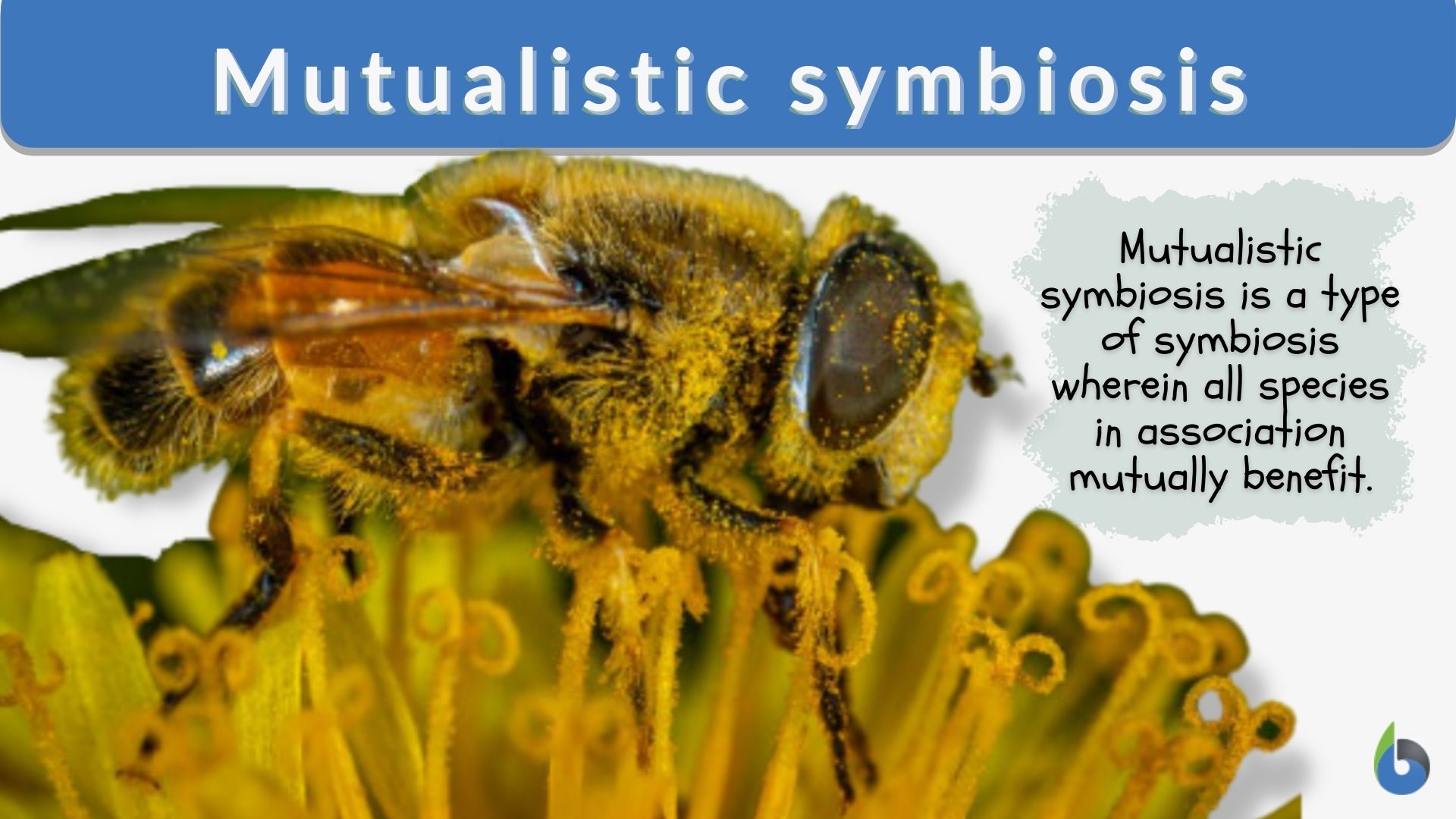Symbiotic relationships are interactions that occur between two organisms in which both benefit from the relationship. There are several types of symbiotic relationships, such as mutualism, commensalism, and parasitism. Mutualism is a type of symbiosis in which both species involved benefit from the interaction.
An example is the relationship between clownfish and sea anemones; the clownfish gains protection from predators by living among the stinging tentacles of the anemone while simultaneously providing food to it through its waste products. Commensalism occurs when one organism benefits while causing no harm or benefit to another organism. A classic example is remora fish which attach themselves onto sharks and feed on scraps left behind by their host without hurting them in any way.
Parasitism is a type of symbiosis where one species benefits at the expense of another species’ health or survival. Tapeworms are parasites that live inside humans, pigs, cows, and other animals; they absorb nutrients from their hosts’ bodies while leaving them weakened due to infection caused by these parasites.
Symbiotic relationships occur when two organisms interact in a way that is beneficial for both. Some of the most common examples include mutualism, commensalism, and parasitism. Mutualism occurs when both organisms benefit from their relationship such as the cooperation between bees and flowers where bees collect nectar from flowers while also providing pollination services to help them grow and reproduce.
Commensalism is a type of relationship where one organism benefits while the other remains unaffected, with an example being certain species of birds that may use trees for nesting without causing any harm to them. Finally, parasitism involves one organism benefiting at the expense of another with tapeworms living inside their hosts’ intestines as an example.
Symbiotic Relationships
Symbiotic Relationship Examples in Nature
One of the most interesting examples of symbiotic relationships in nature is between clownfish and sea anemones. The clownfish lives among the anemone’s tentacles, protected from predators by its stinging cells. In return, the clownfish defends its home from potential threats and brings food for it to eat.
Another example is seen between oxpeckers and large mammals like rhinoceroses or giraffes. Oxpeckers feed on parasites found on these animals’ skin while providing them with a valuable service by keeping their coats free from ticks and other pests.
Symbiotic Relationship Examples in Humans
Humans are capable of forming symbiotic relationships, or mutually beneficial interactions between two different species. Among the most common examples are those between humans and their pets. Pets provide companionship, love, and loyalty to their owners, who in turn supply them with food, shelter and care.
Another example is seen among farmers and honeybees: Farmers allow bees to nest on their land in order to collect nectar from flowers for making honey; this provides a source of income for the farmers while also helping pollinate crops grown by the farmer.
Symbiotic Relationship Types
Symbiotic relationships are interactions between two different species that benefit at least one of the organisms involved. There are three main types of symbiosis: mutualism, commensalism, and parasitism. Mutualism is a relationship where both organisms benefit from their interaction; commensalism is a relationship where one organism benefits while the other is unaffected; and parasitism is an unequal relationship in which one organism benefits while the other suffers harm or even death.
All three types of symbiosis can be found in nature, often within complex food webs composed of multiple species interacting with each other.
Symbiotic Relationship Examples in the Ocean
The ocean contains many different types of symbiotic relationships. One example is the remora, a fish that attaches itself to larger sea creatures such as sharks and whales in order to get free transport and protection from predators. Another example is the relationship between clownfish and anemones; clownfish are able to live amongst the stinging tentacles of anemones because they have developed a mutual immune response.
Additionally, some species of coral rely on algae living within their tissues for food while providing shelter for them in return. All these examples demonstrate how organisms can work together in beneficial ways to survive and thrive in their environment.
Symbiotic Relationship Examples- Parasitism
A common example of a parasitism symbiotic relationship is that between fleas and their hosts, such as dogs or cats. Fleas feed off the blood of their host, resulting in irritation for the animal and sometimes even disease transmission. This arrangement benefits only the flea while leaving its host with an unpleasant experience.
Mutualism Examples
Mutualism is a type of symbiotic relationship where both species involved benefit from the interaction. Common examples of mutualism include the relationship between bees and flowers, which allows for pollination; bacteria in the intestines of humans that aid in digestion; and certain species of birds like woodpeckers that clean trees by removing parasites.
Symbiotic Relationship in Humans
Humans can engage in a variety of symbiotic relationships, including mutualism, commensalism, and parasitism. Mutualistic relationships involve both parties benefiting from the relationship; for example, humans have established mutually beneficial relationships with helpful microorganisms that digest food and synthesize vitamins. Commensalism is when one party benefits while the other receives no benefit or harm.
An example of this type of relationship in humans would be between birds living on our bodies as parasites that feed off us but don’t cause any direct damage to our health. Finally, parasitism occurs when one organism lives off another at its expense; an example is intestinal parasites that take nutrients away from their host without providing anything in return.
Example of Symbiotic Relationship in Plants
An example of a symbiotic relationship in plants is the mutualistic relationship between legumes and nitrogen-fixing bacteria. Legumes such as alfalfa, soybeans, and clover contain root nodules that house specialized bacteria called rhizobia. These rhizobia convert atmospheric nitrogen into a form that can be used by the plant for growth and development.
In return, the plant supplies the bacteria with energy through photosynthesis. This beneficial relationship helps maintain healthy soil fertility levels and increases crop yields.

Credit: www.biologyonline.com
What are the 5 Symbiotic Relationships?
Symbiotic relationships are a type of relationship where two or more species rely on one another for some form of mutual benefit. There are five types of symbiotic relationships: mutualism, commensalism, parasitism, protocooperation, and ecological facilitation. In mutualism, both species benefit from the interaction; this is seen in pollination between plants and insects or cleaning services provided by cleaner fish to larger animals.
Commensalism occurs when one organism benefits while the other isn’t affected; an example would be birds that nest on power lines without affecting the electricity flow. Parasitism is when one organism (the parasite) feeds off its host at its expense; common parasites include fleas and ticks. Protocooperation means that both organisms provide assistance to each other but neither receives any direct benefit; coral reefs act as nurseries for many different species of fish which can take shelter from predators under their cover.
Finally, ecological facilitation refers to how certain plants create microhabitats for other organisms in deserts or high-altitude environments with few resources available otherwise.
What are the Three 3 Examples of Symbiotic Relationships?
Symbiotic relationships are important and common in the natural world. There are three main types of symbiosis: mutualism, commensalism, and parasitism. Mutualism is a relationship between two species that benefits both organisms; for example, certain species of bees and flowers have a mutualistic relationship whereby the bee collects pollen from the flower while providing pollination services to it.
Commensalism is an asymmetrical relationship between two species where one organism benefits without impacting on the other; examples include barnacles attaching themselves to whales or epiphytic plants living on tree branches without harming them. Finally, parasitism occurs when one species benefits at the expense of another; this could be seen with ticks feeding off blood from their host animals or tapeworms taking nourishment from their hosts’ intestines.
What are the 3 Main Types of Symbiotic Relationships Explain.
Symbiotic relationships occur when two species interact in a way that benefits at least one of them. There are three main types of symbiotic relationships: mutualism, commensalism, and parasitism. Mutualism is a relationship between two organisms where both benefit from the interaction; an example would be bees pollinating flowers.
Commensalism occurs when one organism benefits while the other is neither harmed nor helped; an example would be barnacles growing on whales. Parasitism occurs when one organism lives off another and can cause harm to it; an example would be fleas living on animals and sucking their blood for nourishment.
Conclusion
In conclusion, symbiotic relationships are incredibly diverse and fascinating. From the tiny clownfish in a sea anemone to the larger-scale rhino/oxpecker relationship, there is no shortage of examples of organisms working together for mutual benefit. Each example demonstrates how complex nature can be and highlights our need to protect delicate systems like these so that both species involved may continue to thrive.


